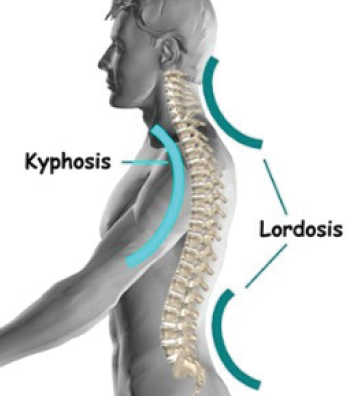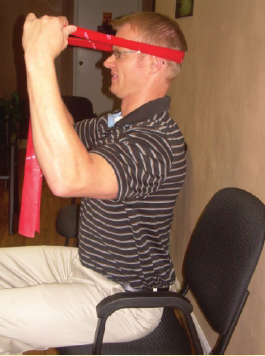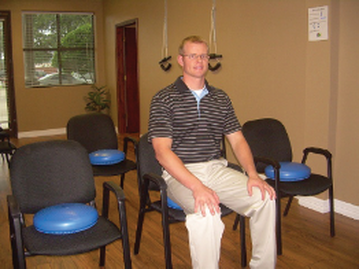What is Spinal Hygiene? - A talk by Dr Susan Goslett - Sunday, 7th May
Does aging have to look like this?
Here are some facts:
But there is help!
- 90% of the stimulation and nutrition to the brain is generated by the movement of the spine.
- For every 2.5cm of 'anterior head syndrome' (second from left) the weight of the head on the spine can increase by an additional 4.5kg.
- 'Anterior head syndrome' leads to long term muscle strain, disc herniations, arthritis and pinched nerves.
- Loss of the cervical (neck) curve stretches the spinal cord 5-7cm and causes disease.
- Deviations of the body's centre of gravity causes poor posture, which results in intestinal problems, hemorrhoids, varicose veins, osteoporosis, hip and foot deformities, poor health, decreased quality of life and shortened life span.
But there is help!
Are you De-Evolving?
“Aging and Degenerative (arthritic) changes are not synonymous”
Spinal Hygiene is a set of practices to aid in the preservation of the spine.
Let's get an understanding of what causes spinal degeneration and how we can maintain the health of the spine and thereby our Nervous System – which controls everything in the body.
On Sunday, 7th May Dr Susan Goslett gave a talk on Spinal Hygiene.
Let's get an understanding of what causes spinal degeneration and how we can maintain the health of the spine and thereby our Nervous System – which controls everything in the body.
On Sunday, 7th May Dr Susan Goslett gave a talk on Spinal Hygiene.
When will you finally take action?
Like it or not, the daily effects of stress and trauma do add up.
In her talk, Susan shared the information of Dr S Tabor Smith an American Chiropractor who suggests that just like daily dental hygiene certain daily practices will act as hygiene for the spine to keep the spine healthy and present degeneration of the spine.
Susan provided a detailed anatomy lesson of the spine; what a healthy spine looks like; how it is constructed and where the weak area are. The weak area are the most flexible areas of the spine which are situated next to stable parts of the spine. The rib cage and the pelvic bones stabilise the spine while the neck and lower back are flexible.
Susan provided a detailed anatomy lesson of the spine; what a healthy spine looks like; how it is constructed and where the weak area are. The weak area are the most flexible areas of the spine which are situated next to stable parts of the spine. The rib cage and the pelvic bones stabilise the spine while the neck and lower back are flexible.

Susan went on to present the exercises that make up the daily routine of Spinal Hygiene. More information can be obtained from Dr Tabor Smith's book that is easily downloaded by clicking here.
There are also video available to help you with the exercises when you click here.
Here are the exercises to do daily:
There are also video available to help you with the exercises when you click here.
Here are the exercises to do daily:
|
Range Of Motion Stretches: Perform this exercise every morning upon arising (and as many times throughout the day as desired). Bend forward hold for 10 seconds. Bend back hold for 10 seconds. Bend sideways hold for 10 seconds. Bend to other side hold for 10 seconds. Twist hold for 10 seconds. Twist to other side hold for 10 seconds. Perform this exercise for both the neck and low back. (Tips: No bouncing or quick movements while performing the exercise. If anything causes a moderate-severe pain stop doing that and move on to the next one)
|
|
Thera-band Exercise: Perform this exercise once a day. Put the thera-band around the back of your head and hold the ends out in front of you with one end in one hand and the other end in the other hand. Make sure your shoulders are extended at 90 degrees and your elbows are extended at 90 degrees directly in front of you. Keep good posture and look directly in front of you the entire time. Apply tension on the thera-band and pull chin straight back while still facing straight ahead (do not tilt the head up or down while trying to pull the chin straight back). Hold for 10 seconds. Relax for 10 seconds. That is one set. You may perform up to 3 sets.
|
|
Wobble Ball Exercise: Perform this exercise once a day. Sit on the wobble ball and bend your spine forward and back 10 times (Do not only bend at the waist. Imagine putting a C shape throughout the entire spine). Bend your spine side to side 10 times (Do not only bend at the waist. Imagine putting a C shape throughout the entire spine). Rotate your low back around in circles 10 times (imagine you are using a holahoop). Rotate your low back around in circles the other way 10 times. This is one set. You may do up to 3 sets.
|
|
Spinal Molding: Perform this exercise every night before bed (and again in the morning if desired). Place one roll under the curve of the neck and the other roll under the curve of the low back. Allow your spine to mold from 5-20 minutes depending on tolerance. (Tips: Lay on a soft bed to decrease the intensity of it. Bend at the knees to decrease the intensity of the low back roll.)
|







